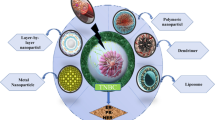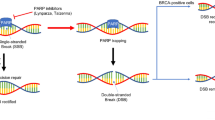Abstract
Background
Breast cancer is the most common cause of cancer death among women worldwide, and diet plays an important role in its prevention and progression. Radiotherapy has a limited but important role in the management of nearly every stage of breast cancer. We studied whether equol, the major metabolite of the soybean isoflavone daidzein, could enhance radiosensitivity in two human breast cancer cell lines (T47D and MDA-MB-231).
Methods
MTT assay was used to examine equol’s effect on cell viability. Sensitivity of cells to equol, radiation and a combination of both was determined by colonogenic assays. Induction of apoptosis by equol, radiation and the combination of both was also determined by acridine orange/ethidium bromide double staining fluorescence microscopy. DNA strand breaks were assessed by Comet assay.
Result
MTT assay showed that equol (0.1–350 μM) inhibited MDA-MB-231 and T47D cell growth in a time- and dose-dependent manner. Treatment of cells with equol for 72 h (MDA-MB-231) and 24 h (T47D) was found to inhibit cell growth with IC50 values of 252 μM and 228 μM, respectively. Furthermore, pretreatment of cells with 50 μM equol for 72 h (MDA-MB-231) and 24 h (T47D) sensitized the cells to irradiation. Equol was also found to enhance radiation-induced apoptosis. Comet assay results showed that the radiosensitizing effect of equol was accompanied by increased radiation-induced DNA damages.
Conclusions
These results suggest for the first time that equol can be considered as a radiosensitizing agent and its effects may be due to increasing cell death following irradiation, increasing the remaining radiation-induced DNA damage and thus reducing the surviving fraction of irradiated cells.







Similar content being viewed by others
References
Musgrove EA, Sutherland RL. Biological determinants of endocrine resistance in breast cancer. Nat Rev Cancer. 2009;9(9):631–43.
Sarkar FH, Li Y. Using chemopreventive agents to enhance the efficacy of cancer therapy. Cancer Res. 2006;66(7):3347–50.
Vallerga AK, Zarling DA, Kinsella TJ. New radiosensitizing regimens, drugs, prodrugs, and candidates. Clin Adv Hematol Oncol. 2004;2(12):793–805.
Garg AK, Buchholz TA, Aggarwal BB. Chemosensitization and radiosensitization of tumors by plant polyphenols. Antioxid Redox Signal. 2005;7(11–12):1630–47.
Romieu I. Diet and breast cancer. Salud Publica Mex. 2011;53(5):430–9.
Michels KB, et al. Diet and breast cancer: a review of the prospective observational studies. Cancer. 2007;109(12 Suppl):2712–49.
Clavel-Chapelon F, Niravong M, Joseph RR. Diet and breast cancer: review of the epidemiologic literature. Cancer Detect Prev. 1997;21(5):426–40.
Giovannucci E. Nutritional factors in human cancers. Adv Exp Med Biol. 1999;472:29–42.
Parkin DM, Pisani P, Ferlay J. Global cancer statistics. CA Cancer J Clin. 1999; 49(1): 33–64, 1.
Ziegler RG, et al. Migration patterns and breast cancer risk in Asian-American women. J Natl Cancer Inst. 1993;85(22):1819–27.
Dai Q, et al. Population-based case-control study of soyfood intake and breast cancer risk in Shanghai. Br J Cancer. 2001;85(3):372–8.
Wu AH, et al. Soy intake and risk of breast cancer in Asians and Asian Americans. Am J Clin Nutr. 1998;68(6 Suppl):1437S–43S.
Messina MJ, et al. Soy intake and cancer risk: a review of the in vitro and in vivo data. Nutr Cancer. 1994;21(2):113–31.
Cassidy A. Physiological effects of phyto-oestrogens in relation to cancer and other human health risks. Proc Nutr Soc. 1996;55(1B):399–417.
Messina M, McCaskill-Stevens W, Lampe JW. Addressing the soy and breast cancer relationship: review, commentary, and workshop proceedings. J Natl Cancer Inst. 2006;98(18):1275–84.
Reinli K, Block G. Phytoestrogen content of foods—a compendium of literature values. Nutr Cancer. 1996;26(2):123–48.
Dixon RA. Phytoestrogens. Annu Rev Plant Biol. 2004;55:225–61.
Setchell KD. Phytoestrogens: the biochemistry, physiology, and implications for human health of soy isoflavones. Am J Clin Nutr. 1998;68(6 Suppl):1333S–46S.
Setchell KD, et al. Nonsteroidal estrogens of dietary origin: possible roles in hormone-dependent disease. Am J Clin Nutr. 1984;40(3):569–78.
Woclawek-Potocka I, et al. Phytoestrogen metabolites are much more active than phytoestrogens themselves in increasing prostaglandin F(2alpha) synthesis via prostaglanin F(2alpha) synthase-like 2 stimulation in bovine endometrium. Prostaglandins Other Lipid Mediat. 2005;78(1–4):202–17.
Atkinson C, Frankenfeld CL, Lampe JW. Gut bacterial metabolism of the soy isoflavone daidzein: exploring the relevance to human health. Exp Biol Med (Maywood). 2005;230(3):155–70.
Setchell KD, Brown NM, Lydeking-Olsen E. The clinical importance of the metabolite equol-a clue to the effectiveness of soy and its isoflavones. J Nutr. 2002;132(12):3577–84.
Setchell KD, Clerici C. Equol: history, chemistry, and formation. J Nutr. 2010;140(7):1355S–62S.
Axelson MS, Setchell KD. The excretion of lignans in rats—evidence for an intestinal bacterial source for this new group of compounds. FEBS Lett. 1981;123:337–42.
Kelly GE, Joannou GE, Reeder AY, Nelson C, Waring MA. The variable metabolic response to dietary isoflavones in humans. Proc Soc Exp Biol Med. 1995;208:40–3.
Karr SC, Lampe JW, Hutchins AM, Slavin JL. Urinary isoflavonoid excretion in humans is dose dependent at low to moderate levels of soy-protein consumption. Am J Clin Nutr. 1997;66:46–51.
Lampe JW, Karr SC, Hutchins AM, Slavin JL. Urinary equol excretion with a soy challenge: influence of habitual diet. Proc Soc Exp Biol Med. 1998;217:335–9.
Rowland IR, Wiseman H, Sanders TA, Adlercreutz H, Bowey EA. Interindividual variation in metabolism of soy isoflavones and lignans: influence of habitual diet on equol production by the gut flora. Nutr Cancer. 2000;36:27–32.
Shi J, et al. Equol induced apoptosis of human breast cancer MDA-MB-231 cell by inhibiting the expression of nuclear factor-kappaB. Wei Sheng Yan Jiu. 2011;40(1):95–8.
Choi EJ, Ahn WS, Bae SM. Equol induces apoptosis through cytochrome c-mediated caspases cascade in human breast cancer MDA-MB-453 cells. Chem Biol Interact. 2009;177:7–11.
Lau TY, Leung LK. Soya isoflavones suppress phorbol 12-myristate 13-acetate-induced COX-2 expression in MCF-7 cells. Br J Nutr. 2006;96:169–76.
Magee PJ, McGlynn H, Rowland IR. Differential effects of isoflavones and lignans on invasiveness of MDA-MB-231 breast cancer cells in vitro. Cancer Lett. 2004;208:35–41.
Kang NJ, Lee KW, Rogozin EA. Equol, a metabolite of the soybean isoflavone daidzein, inhibits neoplastic cell transformation by targeting the MEK/ERK/p90RSK/activator protein-1 pathway. J Biol Chem. 2007;282:32856–66.
Gluz O, et al. Triple-negative breast cancer–current status and future directions. Ann Oncol. 2009;20(12):1913–27.
Takahashi Y, Lavigne JA, Hursting SD. Molecular signatures of soy-derived phytochemicals in androgen-responsive prostate cancer cells: a comparison study using DNA microarray. Mol Carcinog. 2006;45:943–56.
Yan L, Li D, Yee JA. Dietary supplementation with isolated soy protein reduces metastasis of mammary carcinoma cells in mice. Clin Exp Metastasis. 2002;19:535–40.
Hodgson JM, Croft KD, Puddey IB, Mori TA, Beilin LJ. Soybean isoflavonoids and their metabolic products inhibit in vitro lipoprotein oxidation in serum. J Nutr Biochem. 1991;7:664–9.
Collins AR, Duthie GG. Antioxidant efficacy of phytoestrogens in chemical and biological model systems. Arch Biochem Biophys. 1998;360:142–8.
Arora A, Nair MG, Strasburg GM. Antioxidant activities of isoflavones and their biological metabolites in a liposomal system. Arch Biochem Biophys. 1998;256:133–41.
Reed, J.C., Apoptosis. Volume 322 of Methods in enzymology Methods in Enzymology S., v. 322, ed. J.C.R. John N. Abelson, Melvin I. Simon2000: Academic Press. 569.
Collins AR, et al. The comet assay: what can it really tell us? Mutat Res. 1997;375(2):183–93.
Singh NP, et al. A simple technique for quantitation of low levels of DNA damage in individual cells. Exp Cell Res. 1988;175(1):184–91.
Rakha EA, et al. Prognostic markers in triple-negative breast cancer. Cancer. 2007;109(1):25–32.
Cheang MC, et al. Basal-like breast cancer defined by five biomarkers has superior prognostic value than triple-negative phenotype. Clin Cancer Res. 2008;14(5):1368–76.
Dent R, et al. Triple-negative breast cancer: clinical features and patterns of recurrence. Clin Cancer Res. 2007;13(15 Pt 1):4429–34.
Reis-Filho JS, Tutt AN. Triple negative tumours: a critical review. Histopathology. 2008;52(1):108–18.
Oakman C, Viale G, Di Leo A. Management of triple negative breast cancer. Breast. 2010;19(5):312–21.
Kyndi M, et al. Estrogen receptor, progesterone receptor, HER-2, and response to postmastectomy radiotherapy in high-risk breast cancer: the Danish Breast Cancer Cooperative Group. J Clin Oncol. 2008;26(9):1419–26.
Charalambous C, Pitta CA, Constantinou AI. Equol enhances tamoxifen’s anti-tumor activity by induction of caspase-mediated apoptosis in MCF-7 breast cancer cells. BMC Cancer. 2013;13:238.
Thomas C, et al. ERbeta1 represses basal-like breast cancer epithelial to mesenchymal transition by destabilizing EGFR. Breast Cancer Res. 2012;14(6):R148.
Sarrio D, et al. Epithelial-mesenchymal transition in breast cancer relates to the basal-like phenotype. Cancer Res. 2008;68(4):989–97.
Vladusic EA, et al. Expression and regulation of estrogen receptor beta in human breast tumors and cell lines. Oncol Rep. 2000;7(1):157–67.
Adams M, et al. Changes in tenascin-C isoform expression in invasive and preinvasive breast disease. Cancer Res. 2002;62(11):3289–97.
Bardin A, et al. Loss of ERbeta expression as a common step in estrogen-dependent tumor progression. Endocr Relat Cancer. 2004;11(3):537–51.
Harris DM, et al. Phytoestrogens induce differential estrogen receptor alpha- or Beta-mediated responses in transfected breast cancer cells. Exp Biol Med (Maywood). 2005;230(8):558–68.
Conflict of interest
The authors declare that they have no conflict of interest.
Author information
Authors and Affiliations
Corresponding author
About this article
Cite this article
Taghizadeh, B., Ghavami, L., Nikoofar, A. et al. Equol as a potent radiosensitizer in estrogen receptor-positive and -negative human breast cancer cell lines. Breast Cancer 22, 382–390 (2015). https://doi.org/10.1007/s12282-013-0492-0
Received:
Accepted:
Published:
Issue Date:
DOI: https://doi.org/10.1007/s12282-013-0492-0




